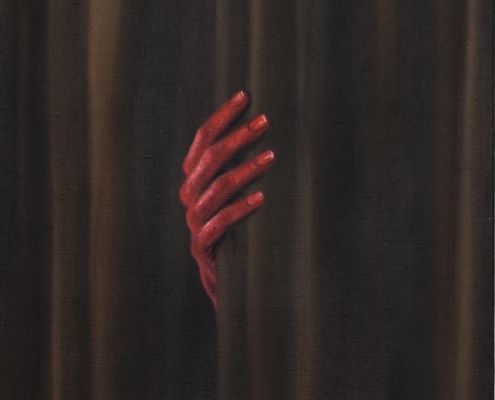Yet, upon closer inspection, when the bullets come into focus, the effect is arresting. Making art out of disaster in and of itself is a tradition I feel comfortable participating in, but it is not enough. I donated 20 percent of the sale of Death Star 2018 to Everytown for Gun Safety, a U.S. based nonprofit advocating for gun control.
Some of your works clearly reveal your training as a restorer. Did you practice restoration after your studies in Florence?
In 1972, I received a grant to study restoration and art history in Florence. I was interested in art history and was not quite sure I had the guts to become an artist. I was a student and I did not practice restoration after that time, but I have such respect for conservators: they truly save art. My early exposure to restoration influenced the way in which I look at art as loaded objects, imbued with an otherwise inaccessible narrative. In making my large-scale charcoal drawing series “Gang of Cosmos” (2012–2020) based on seminal Abstract Expressionist paintings, my process became almost forensic. With each work, I retraced the artist’s process: I considered the hierarchy of Jackson Pollock’s layers of paint and the speed and examined the violence of Joan Mitchell’s brushstrokes. It’s quite intimate to study another artist’s process and hand in this way. My respect for the tradition of restoration also led me to my series called ‘Hungry Ghosts” based on X-rays of historical paintings– works by Titian, Rembrandt, Manet, etc. X-ray images really translate into charcoal perfectly.
What are you working on these days?
Staying alive. I live in NYC, the center of the Coronavirus crisis in America. I was working on exhibitions in NYC and in L.A. However, due to the global pandemic, the shows may be postponed. These exhibitions would focus on my large-scale charcoal drawings from my “Destroyer Cycle” series (2014–2020), images of power, protest, and desperation in today’s America. We are accustomed to swipe and scroll through the endless news cycle, we all become terribly numb to images of war, violence, and trauma. We forget that we are all part of the story, and that we are all responsible for the sins of our fathers. Now we must face a future so uncertain that art is needed now more than ever. It is a true act of freedom. Making art is my one weapon I have against these dark times. Shine on.
 https://www.nastymagazine.com/wp-content/uploads/2024/07/WEB2-1.jpg
823
895
Editor Nasty
https://www.nastymagazine.com/wp-content/uploads/2015/02/new-logo-basker-WHITE4.png
Editor Nasty2024-07-24 12:01:502024-07-24 12:02:03Mia Middleton / Fleeting Phenomena
https://www.nastymagazine.com/wp-content/uploads/2024/07/WEB2-1.jpg
823
895
Editor Nasty
https://www.nastymagazine.com/wp-content/uploads/2015/02/new-logo-basker-WHITE4.png
Editor Nasty2024-07-24 12:01:502024-07-24 12:02:03Mia Middleton / Fleeting Phenomena













